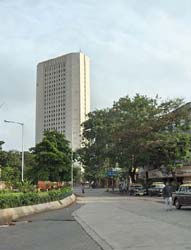RBI keeps repo rate unchanged at 6%; projects a spike in inflation
06 Dec 2017
The Monetary Policy Committee (MPC) of the Reserve Bank of India (RBI) at its meeting today, decided to keep the policy repo rate under the liquidity adjustment facility (LAF) unchanged at 6.0 per cent.
 Consequently, the reverse repo rate under the LAF remains at 5.75 per cent, and the marginal standing facility (MSF) rate and the Bank Rate at 6.25 per cent.
Consequently, the reverse repo rate under the LAF remains at 5.75 per cent, and the marginal standing facility (MSF) rate and the Bank Rate at 6.25 per cent.
RBI said the decision has been taken on the basis of the recent spikes in inflation rate and an assessment of the current and evolving macroeconomic situation.
''The decision of the MPC is consistent with a neutral stance of monetary policy in consonance with the objective of achieving the medium-term target for consumer price index (CPI) inflation of 4 per cent within a band of +/- 2 per cent, while supporting growth,'' it added.
Consumer price inflation measured by the annual rate of change in the consumer price index (CPI) hit a seven-month high in October, driven by a sharp uptick in momentum, tempered partly by some favourable base effects. Food inflation was volatile in the last two months – declining sharply in September and bouncing back in October – due mainly to vegetables and fruits.
RBI has raised the inflation forecast for the next two quarters from 4.2-4.6 per cent to 4.3- 4.7 per cent on rising crude oil and vegetable prices. However, RBI said that headline inflation has gone along the projections.
The October bi-monthly statement had projected inflation to rise and range between 4.2-4.6 per cent in the second half of this year, including the impact of increase in house rent allowance (HRA) by the centre. Going forward, RBI said, the inflation path will be influenced by several factors and that the risk of an upward trajectory in the near-term continued.
The Reserve Bank's survey of households showed inflation expectations firming
up in the latest round for both three months ahead and one year ahead horizons.
Farm and industrial raw material costs rose in October. Firms responding to the Reserve Bank's Industrial Outlook Survey expect to pass on the increase in input prices to their output prices.
Turning to other costs, wage growth in the organised sector edged up,
while rural wage growth weakened, particularly in agriculture.
RBI said the surplus liquidity in the system has continued to decline during October and November. Currency in circulation increased by Rs736,000 crore in Q3 (up to 1 December 2017) over end-September on festival demand. RBI said it managed to suck off the excess liquidity through regular variable rate reverse repo auctions of various tenors, ranging from overnight to 28 days. On an average, the net daily absorption of liquidity under the LAF declined from Rs2,22,900 crore in September to Rs1,40,000 crore in October 2017 and further to Rs71,800 crore in November.
The Reserve Bank conducted open market sales of Rs30000 crore in October-November, taking the total absorption of durable liquidity during the financial year so far to Rs190,000 crore, comprising Rs90000 crore in the form of open market sales and Rs100,000 crore in long-term treasury bills under the market stabilisation scheme.
RBI noted that growth of real gross value added (GVA) accelerated sequentially in Q2 of 2017-18, after five consecutive quarters of deceleration. It was powered by a sharp acceleration in industrial activity. All the three sub-sectors of industry registered higher growth.
GVA growth in the manufacturing sector – the key component of industry – accelerated sharply on improved demand and re-stocking post goods and services tax (GST) implementation. The mining sector expanded in Q2 due to higher coal and natural gas production. GVA growth in the electricity, gas, water supply and other utility services sector also strengthened on higher demand.
In contrast, growth in agriculture and allied activities slackened, reflecting the lower than expected kharif harvest.
Activity in the service sector decelerated, mainly on account of slowdown in financial, insurance, real estate and professional services, and in public administration, defence and other services (PADO) following the large front-loading of government expenditure in Q1.
Despite some improvement, construction sector growth remained tepid due to transitory effects of the RERA and GST implementation. Growth in the trade, hotels, transport and communication sub-group remained resilient, in spite of some slowdown in growth in Q2 compared with the previous quarter.






















